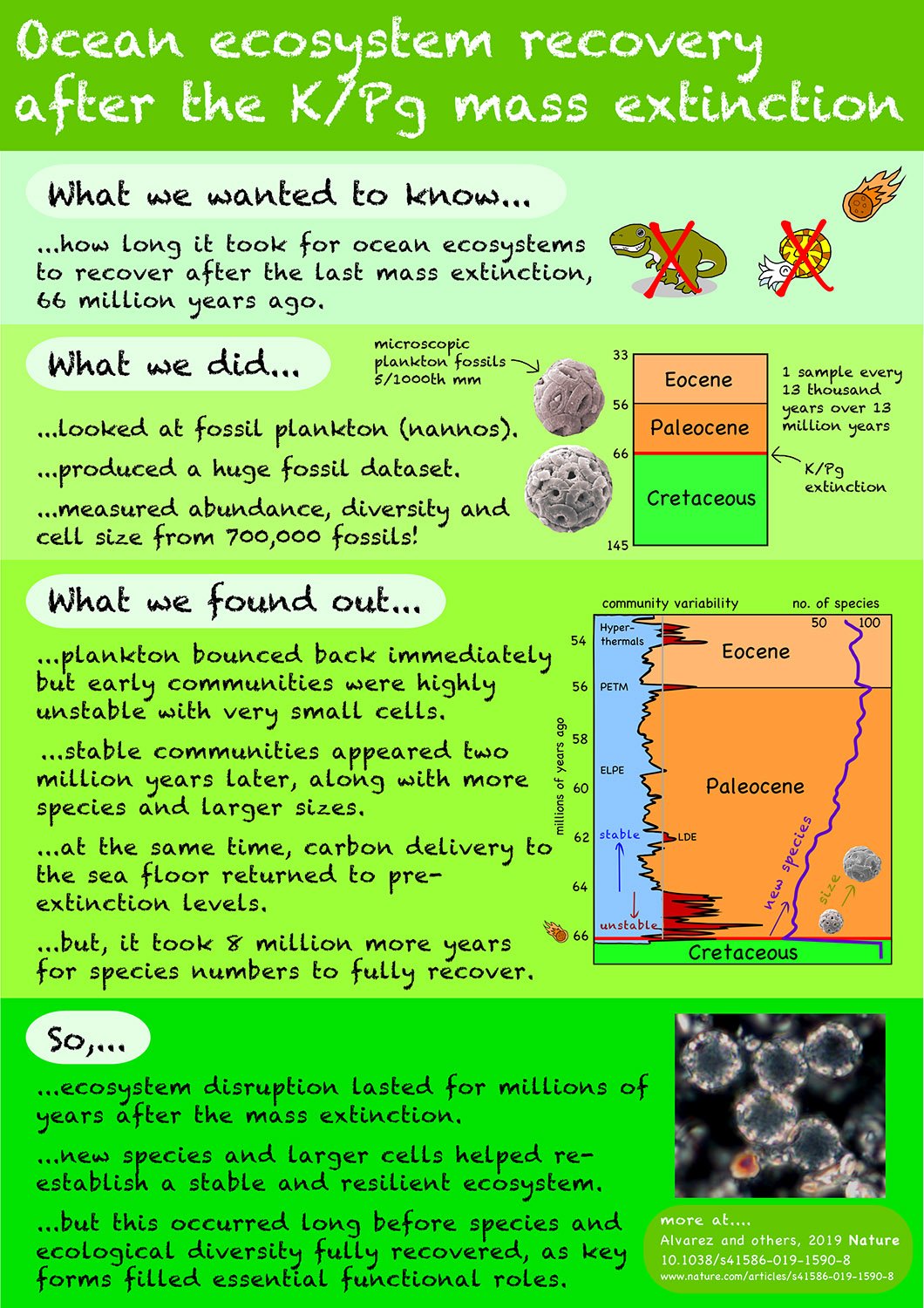How long does it take ecosystems to recover from mass extinction and to become functional and resilient again? A team, including Samantha Gibbs from the University of Southampton, and researchers from the universities of University College London, Bristol, Frankfurt and California have tackled that question by producing an unprecedented record of the biotic recovery that followed after the last mass extinction, 66 million years ago. In an article published this week in the journal Nature, they present a 13 million-year record of fossil plankton dynamics in the aftermath of near annihilation, providing a remarkable glimpse into how the marine ecosystem ‘reboots’. The Cretaceous/Paleogene (K/Pg) mass extinction occurred when an asteroid impact caused global environmental devastation and is well known for the extinction of dinosaurs, ammonites and many other groups. But, as well as the loss of these larger animals, there were equally devastating extinctions in the ocean plankton, which removed food production at the base of the marine ecosystem and crippled important ocean functions, such as the delivery of carbon to the deep-sea, which is a critical control on atmospheric carbon dioxide.
“We wanted to find out how long the ocean ecosystems took to recover and how this happened”, says Sarah Alvarez (University of Bristol, UCL and now Gibraltar), lead author of the study. “We looked at the best fossil record of ocean plankton we could find – calcareous nannofossils (they are still around today) – and collected 13 million years of information from a sample every 13 thousand years. We measured abundance, diversity and cell size from over 700,000 fossils, probably the largest fossil dataset ever produced from one site!”

What did this tell us?
[rand_post]
Alvarez and co-authors found that these plant-like (photosynthetic) plankton bounced back almost immediately after the mass extinction but that the early communities were highly unstable and cell sizes were unusually small. Major ecosystem disruption persisted for two million years after the mass extinction but the gradual appearance of new species and larger cells helped re-establish a stable and resilient ecosystem. At the same time, carbon delivery to the sea-floor returned to pre-extinction levels, marking the restoration of this critical ocean function. This occurred long before species and ecological diversity fully recovered, as key forms filled essential functional roles. It took 8 million more years for species numbers to fully recover to previous levels.
So, a take-home message for our current oceans?
The marine ecosystem is dependent on the plankton at its base, just as much today as in the past. This study highlights the risks posed by diversity loss which may result in highly unstable communities, loss of important ecosystem functions and long timescales of recovery.
“Losing species today runs the risk of eliminating key players in the ecosystems. What we’ve demonstrated from the fossil record is that function is achieved if you have the right players fulfilling key roles. Today, by reducing biodiversity, we are running the risk of losing our critical ecosystem players, many of whose importance we don’t yet fully appreciate” says Samantha Gibbs.
